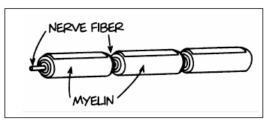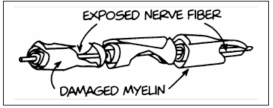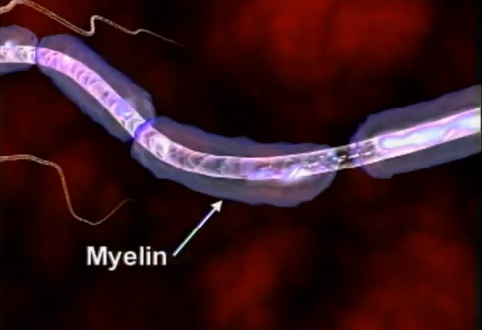|
What is MS?
MS is a chronic, often disabling disease that affects the central nervous system (CNS). The CNS consists of the brain, spinal cord and the optic nerves.

The nerve fibers of the CNS are surrounded and protected by a fatty substance called myelin, which helps the nerve fibers to conduct electrical impulses.
In MS, myelin is lost in multiple areas, leaving scarred or sclerotic tissue—which gives the disease its name. These damaged areas are also known as plaques or lesions. The nerve fibers themselves may also be damaged or broken.

When myelin is damaged or destroyed, the ability of nerves to conduct electrical impulses to and from the brain is disrupted, producing the various symptoms of MS. Destruction of the nerve fibers themselves is believed to cause the permanent disability that many people with MS experience.

What is MS? - National MS Society
This video shows what happens in the central nervous system when a person has multiple sclerosis.
Click on photo to watch video
|